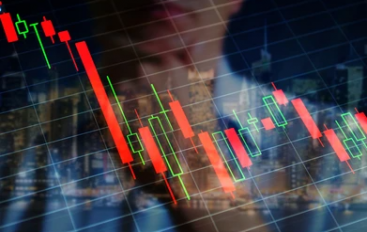In early 2025, just months into his second term, President Donald J. Trump reignited the trade war with sweeping tariffs aimed at China, Europe, and Mexico, alongside threats of further sanctions. Citing the need to “protect American workers,” the administration implemented universal 10–25% tariffs on a range of imports—from Chinese electronics to European automobiles and Mexican agricultural goods. In-depth analysis of how American businesses are reacting to the 2025 tariff shocks wave—relocation, reshoring, lobbying, and leadership.
This aggressive protectionist stance has caught U.S. companies in the crossfire, forcing them to re-evaluate sourcing strategies, reconfigure supply chains, and in some cases, relocate manufacturing back to the United States or other friendlier jurisdictions. The ripple effect of these policies is being felt across industries—from tech and automotive to agriculture and apparel.
This blog takes a deep dive into how companies are adjusting: whether through reshoring, diversification, or lobbying. We’ll also highlight spotlight stories of major firms adapting in real-time, provide recent data, and conclude with insights from Mattias Knutsson, a strategic leader in global procurement, on what lies ahead.
The Tariff Timeline: What Happened and When
| Date | Tariff Action | Target | Sector Affected |
|---|---|---|---|
| March 3, 2025 | 10% tariff on all Chinese goods | China | Electronics, Textiles |
| March 10, 2025 | 20% tariff on EU autos | Europe | Automotive |
| March 17, 2025 | 25% retaliatory tariffs by China | U.S. | Agriculture, Aerospace |
| April 21, 2025 | Threat of tariffs on Mexico | Mexico | Food, Industrial Imports |
This wave of tariffs has created significant disruptions, especially for companies heavily dependent on global supply chains.
Relocation and Reshoring: Strategic Shifts in Supply Chains
Apple Inc. – Vietnam, India, and Beyond
Despite prior investments in China, Apple accelerated its diversification strategy in response to the March tariffs. According to Bloomberg (March 2025), over 30% of iPhone production for North America is now being shifted to India and Vietnam, up from 10% in 2023.
- Apple’s supplier Foxconn invested an additional $1.2 billion in Tamil Nadu, India.
- Vietnam’s Bac Giang province saw a 15% year-on-year increase in tech sector employment due to Apple-related expansion.
“We’re building redundancy into our supply chain,” said an Apple spokesperson during an April earnings call. “This is not a temporary solution—it’s the future.”
General Motors (GM) – Rethinking Mexico
GM, long reliant on Mexican production for trucks and SUVs, is facing increased uncertainty after Trump’s renewed focus on border tariffs. In response, the company announced:
- $3 billion investment into U.S. factories in Michigan and Indiana.
- A plan to relocate battery pack assembly from Mexico to Tennessee by 2026.
According to GM’s April 2025 shareholder report, the company expects a $750 million increase in annual operating costs due to tariff-related shifts but aims to recover through automation and domestic incentives.
Levi Strauss & Co. – Back to the U.S.A.
Levi’s has begun reshoring denim production to the United States, partnering with sustainable textile startups in North Carolina. Though costlier, the move provides:
- Tariff avoidance on Chinese fabrics.
- Enhanced brand value with “Made in America” marketing.
- Quicker inventory turnaround for e-commerce channels.
Levi’s COO noted:
“What we lose in cost efficiency, we’re making up for in customer loyalty and flexibility.”
Lobbying Efforts: Boardrooms Go to Washington
Companies aren’t just moving factories—they’re moving lobbying dollars.
Lobbying Spending by Major Sectors (Q1 2025)
| Sector | Lobbying Spend (Q1 2025) | % Increase YoY |
|---|---|---|
| Tech | $38 million | +22% |
| Automotive | $21 million | +35% |
| Retail | $18 million | +41% |
| Agriculture | $14 million | +28% |
Spotlight: U.S. Chamber of Commerce
The U.S. Chamber of Commerce, which represents thousands of firms, has mounted an aggressive media and legal campaign against the tariffs.
- In April, they filed a joint petition with 57 trade associations urging Congress to intervene and limit unilateral tariff powers.
- The Chamber estimates that current tariffs could reduce U.S. GDP by 0.5% annually if maintained into 2026.
Retail Industry Leaders Association (RILA)
Retailers like Walmart, Target, and Best Buy are among the most vulnerable. RILA has lobbied for:
- A “Tariff Relief Window” for companies to restructure contracts.
- A tax credit system to offset increased costs from import substitution.
Who’s Winning: Beneficiaries of the Tariff Shifts
While many businesses are struggling, some are benefiting:
Manufacturers in Southeast Asia
Countries like Vietnam, Thailand, and Malaysia have seen surging U.S. investment.
- Vietnam’s exports to the U.S. grew 27% year-on-year in Q1 2025.
- Thailand’s electronics sector added over 12,000 new jobs in March alone.
Domestic Automation Firms
With labor costs high in the U.S., automation is helping bridge the cost gap:
- Rockwell Automation reported a 19% increase in orders in Q1 2025.
- ABB and Siemens USA have also seen growth in warehouse robotics and factory automation.
Industry Snapshots: Sector-by-Sector Impact
Technology
- Winners: Semiconductor testing firms in Taiwan, cloud infrastructure providers in the U.S.
- Losers: Consumer electronics with complex China supply chains.
Agriculture
- Winners: Brazil and Argentina, picking up lost Chinese demand for soybeans.
- Losers: U.S. farmers—soy exports down 18% YoY since the China retaliation.
Automotive
- Winners: U.S.-based EV startups with localized production.
- Losers: Legacy carmakers relying on global parts supply.
Employee Impact: The Human Side of Reshoring
While corporations adjust strategies, the impact on American workers is mixed.
- Positive: Nearly 40,000 jobs were announced as part of reshoring in Q1 2025, per the Reshoring Initiative.
- Negative: A May 2025 report shows 7,800 layoffs from firms exiting China and restructuring.
Union Reactions:
- UAW (United Auto Workers): Applauded GM’s Michigan investments.
- UNITE HERE: Warned that lower-tier suppliers are still offshoring to reduce compliance costs.
Long-Term Strategic Shifts in Procurement
This new tariff era is not seen as temporary. It’s creating a paradigm shift in how companies think about sourcing, procurement, and supply chain risk.
Key Long-Term Trends:
| Strategic Move | % of Fortune 500 Executing (2025 survey) |
|---|---|
| Dual sourcing | 68% |
| Nearshoring | 55% |
| AI-based supply chain planning | 61% |
| Inventory regionalization | 72% |
Conclusion: Insights from Mattias Knutsson
In this turbulent trade environment, one leader who has been frequently cited in procurement and strategic planning circles is Mattias Knutsson, known globally for his work in global procurement and business development.
In a recent roundtable hosted by the International Procurement Forum (April 2025), Knutsson offered a comprehensive outlook:
“The 2025 tariff wave is not just a blip—it’s an inflection point. Companies are learning that resilience and agility are more valuable than marginal cost savings. It’s not enough to have one cheap supplier in Asia—you need three, on three continents, with different logistics channels. And you need digital visibility to manage them all.”
He emphasized the move from efficiency-centric models to resilience-centric strategies, advocating for:
- Advanced analytics in procurement decisions.
- Supplier risk scores based on geopolitical exposure.
- Investment in regional sourcing hubs in Latin America and Eastern Europe.
Knutsson’s final recommendation was clear:
“Smart businesses will treat tariffs not as a temporary policy, but as the new baseline. Prepare now, or pay later.”
The Trump 2025 tariff policy has undoubtedly shocked the system. But it has also catalyzed a broader strategic rethink across industries. Businesses are retooling supply chains, investing in automation, lobbying for change, and, above all, building for a more volatile global economy.
From tech giants like Apple to apparel leaders like Levi’s, the message is clear: the era of static, cost-optimized global supply chains is over. The new era belongs to those who can adapt—fast.
Trumps Tariffs Trade War Series:
Historical Background
- From Protection to Prosperity: The Role of Tariffs in Financing Early America
- The Tariff Battles of the 19th Century: Industrial Growth and Political Divide
- How Tariffs Built Railroads, Factories, and the American Dream (1800–1912)
Background to Today’s Tariffs
- From Smoot-Hawley to the WTO: A Century of Trade Policy Shifts
- The Rise of Free Trade and the Decline of Tariffs: 1945 to 2000
- The Tariff Comeback: Why Tariffs Returned as a Political Weapon in the 21st Century
Trump Tariffs Deep Dive: Trade Wars with the EU, China, and Beyond
- Trump’s Tariff Strategy: National Security or Economic Gamble?
- EU Under Pressure: Wine, Steel, and the Automotive Tariff Threat
- The U.S.-China Trade War Timeline: From Tariff Waves to Tech Decoupling
- Collateral Damage: How Trump Tariffs Affected Mexico, Canada, India, and Japan
Country-by-Country Response Monitoring: Reactions to Trump’s 2025 Tariff Hike
- China Strikes Back: Export Controls, Rare Earths, and Consumer Tech Retaliation
- European Union’s Balancing Act: Strategic Patience or Trade Fight Ahead?
- Japan and South Korea: Strategic Allies or Silent Rivals in Tariff Diplomacy?
- ASEAN & India: Winners or Losers in the Tariff Shuffle?
- South America’s Role in a Polarized Trade World
Ongoing Monitoring and News Reaction: Tracking Trump’s Tariffs in Real-Time
- Week-by-Week: The Global Market Reaction to Trump’s 2025 Tariff Policy
- U.S. Companies Caught in the Crossfire: How Businesses Are Adjusting to Tariff Shocks
- From Retail to Rare Earths: Key Sectors Most Affected by New Tariffs
- Trade Talks Tracker: Are New Negotiations a Signal of Resolution or More Chaos?
- Inside the Beltway: How Congress, Lobbyists, and Think Tanks are Shaping the Tariff Narrative





